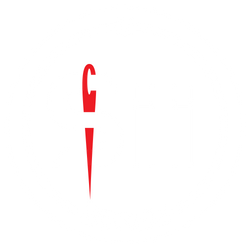SiiStore.com stocks a huge variety of quality embroidery stabilizers consisting of the very finest and largest selection of woven and non-woven backings. We sell embroidery backing in rolls, die cut sheets, and even perforated backing rolls.
If you don't see exactly what you need, we are fully equipped with high capacity backing conversion equipment. Call for a free quote so we can fill your custom backing size requirements. For example, we convert roll backings into pre-cut sizes and we slit and re-roll all embroidery stabilizer types to your exact request.
Tear-away Embroidery Backing
Tear-away is typically the go to backing for most embroiderers. Designs can usually be completed cheaper, quicker and safer with a tear-away backing than with cut-away. If you’ve ever destroyed one expensive garment, the benefits of tear-away backings stay with you forever. Most tear-away backings range in weight from 1oz to 3oz. To perform well as a backing, a tear-away should be stable and capable of withstanding repeated perforations. The backing should tear effortlessly and neatly in either direction. Unfortunately, some embroiderers are still using backings that tear only in one direction. These products have to be yanked hard which leaves long strings of fiber. Tugging on a tough tear-away too hard or too quickly can unnecessarily cause distortions of the design.
No matter the kind of tear-away, you should always tear the backing as close to the stitches as possible to eliminate any chance of distortion. For a general rule of thumb, use two light layers of tear-away and pull them off one at a time. This technique can significantly help you avoid distortion of the design. However, this method is rather expensive and time consuming.
Finally, in choosing a tear away backing you should consider ease of tear, neatness of tear, hoop stability, and perforation resistance. Tear-aways can be used on most items but should be used with restraint on extremely delicate or stretchy fabrics such as loosely knit sweaters. Swimsuits and socks are often exempt to this rule where wash-away/tear- away is a good choice.
Cutaway Embroidery Backing
Cut-away backings are required to provide a stable base for delicate and flexible fabrics both during and after the stitching process. Some fabrics are so flexible they can force themselves down the needle plate. A good cut-away backing not only helps preserve the crispness of a design's detail, it also helps maintain the design's shape after repetitive washings. You can avoid having an angry customer that wants to return a drooping or stretched design when you use a good cut-away backing. A good embroiderer should insist that cut-aways are both machine washable and are able to be dry cleaned.
It’s very important not to cut too close to the embroidery stitching with your scissors and to use a gliding scissor motion rather than a cutting motion. A cut-away that has some rigidity will assist with this scissor motion. When cutting, both the backing and the fabric should be kept in view, so you do not allow the fabric to fold over. You may even want to consider blunt-end scissors to prevent snagging or tearing fabric. Others use versatile 3.5-inch to 4-inch double sharps. Nippers are not typically useful for this procedure.
Most cut-aways range in weight from 1.5oz to 3.5oz. Cut-away backings are typically more resistant to needling perforations than tear-aways. In choosing a cut-away consider ease of cutting, wash stability, hoop stability, and perforation resistance. Cut-aways usually have more bulk than tear-aways. Sometimes, the embroiderer needs to decide which property is most important for a particular design. A softer backing tends to have more hoop stretch and will not allow as crisp a design as stiff backings.
